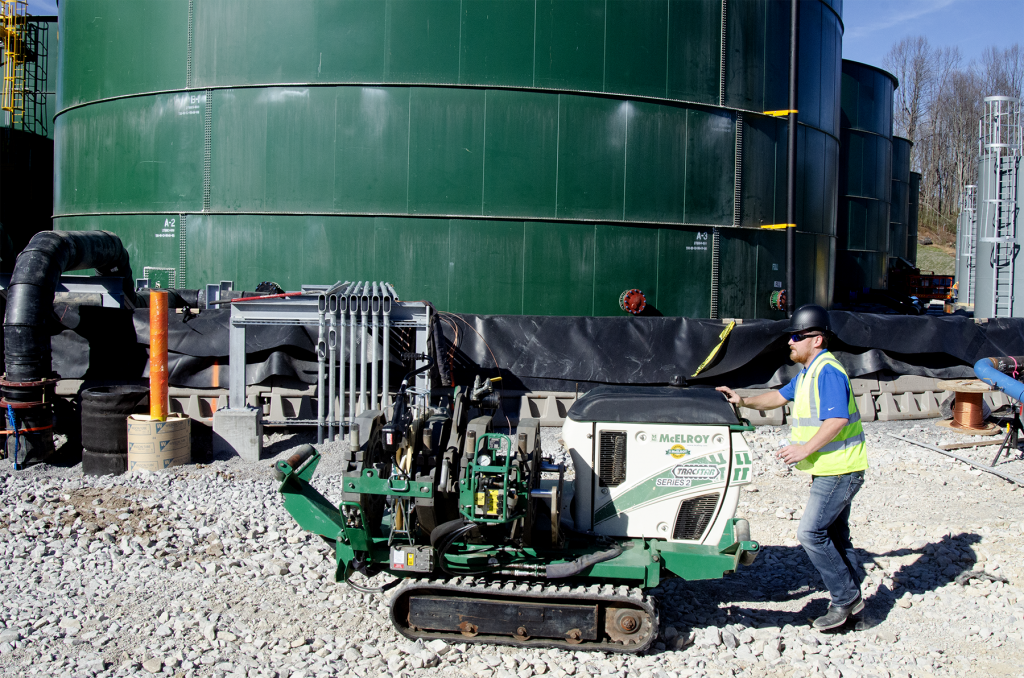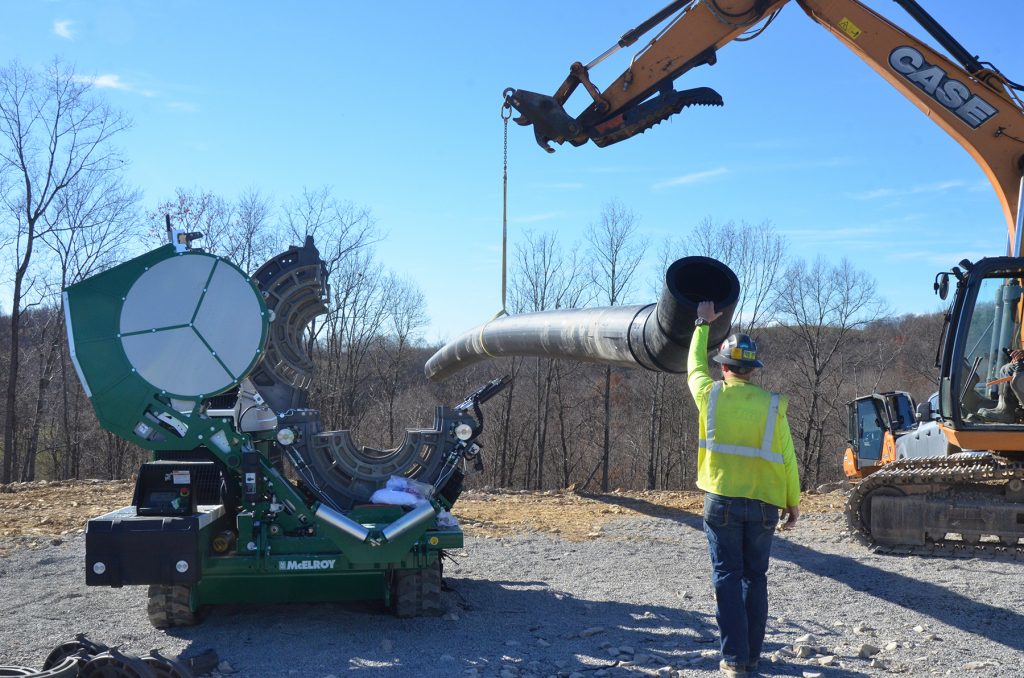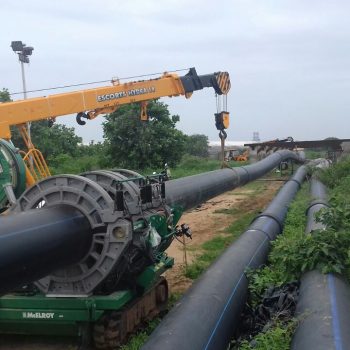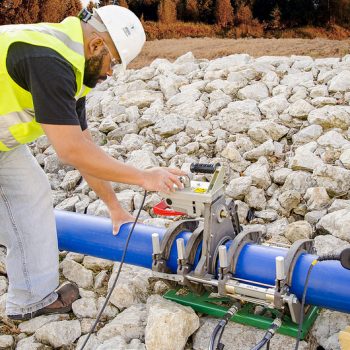In winter 2022, near the small Pennsylvania community of Wind Ridge, a project was underway to install high-density polyethylene (HDPE) pipe as the sole piping material of a hydraulic fracturing – or fracking – operation.

Fracking is a method of extracting oil or natural gas from within the earth. During a fracking operation, cracks or seams in the earth’s crust are injected with water at high pressure and widened, releasing the oil or natural gas trapped inside.
This process has taken place across the United States for decades, tapping into reserves stored in basins scattered across the country. Two of those basins – the Marcellus and the Devonian – overlap at different depths in West Virginian panhandle and spread into Ohio and Pennsylvania.
Fracking involves pumping millions of gallons of water, brine, or chemicals, which makes water transfer and storage a critical part of the overall process.
Pipelines that travel to and from water-holding tanks are situated on a level surface called a frack pad. The pipes are used to transfer water – typically a brine mix – from those tanks to the frack sites. This kind of setup historically uses steel pipe.
But contractors at this location decided to do things a little differently.
HDPE is known worldwide for its longevity, corrosion resistance, and ease of installation compared to traditional piping materials. For those reasons, all fabrications at the frack pad near Wind Ridge were made from HDPE, fused together using rugged and reliable McElroy fusion equipment.
“All of the segmented fittings there used polyethylene instead of steel,” said Pat Sims, Outside Sales Representative at Morain Sales and Service. The Youngstown, Ohio-based equipment company provided the fusion machines for the operation.
To fuse the pipe, which ranged from six to 24 inches (152-609mm), Morain provided a TracStar® 900 iSeries, along with a pair of TracStar 618s. The TracStars are known for their rugged reliability, with motorized rubber tracks that allow the machine to be driven directly to the fusion site.
“This is a big operation, and there are a lot of pressure differentials going on as well,” Sims said. “Because this terrain is so hilly, there have to be pressure release valves at the peaks and the valleys. When these transfer lines get to the bottom of the hills, the pressure can get so high it’ll blow the line if there’s not a way to release that pressure.”
To compensate for the pressure changes, the DR of the transfer line pipes vary throughout the installation. At the top of the hills, the HDPE is DR11, Sims said.
Because of the strict quality control parameters, Sims said all fusion machines coming to the site were required to do a test fusion before it could be put into the rotation. After performing the test fusion, a McElroy In-Field® Tensile Tester was used to check the integrity and strength of the joint.
“They want to make sure the material is good, the operator is good, and the machine is good,” Sims said.

At the Wind Ridge location, contractors decided to rely heavily on pipeline usage for water transfer, rather than primarily trucking water into the fracking sites themselves. In this part of the country, the roads are narrow and the terrain hilly, making it hard for construction equipment to navigate even under the best of conditions. In some cases, roads have to be built from scratch to reach the fracking sites themselves.
That’s where the speed and reliability of HDPE comes into play. By quickly installing HDPE pipelines, construction companies were able to save time, manpower, and money. The TracStars’ mobility improved operator efficiency, allowing them to easily traverse the hilly terrain with the machines and perform fusions on location.
“This way, instead of having trucks going to every single site to provide water or brine, it’s at one centralized location,” Sims said. “That means a lot less road work, a lot less time spent getting trucks to frack sites, and a lot more time saved overall.”
Even better, HDPE can be reused – in more ways than one. In the past, Sims said, companies would leave their water transfer lines aboveground. When a fracking project was finished at one site, the pipe could be cut, loaded onto a truck, and taken to the next frack site to be fused again. Now, though, many companies are burying their HDPE transfer lines, then selling those lines to local municipalities to recoup some of the cost of their investments.
The fracking industry is one of feast or famine – sometimes the activity is nonstop, and others the market quiets down for months at a time. Morain has been working with fracking companies for about five years, Sims said, and as of late 2022 the company was providing multiple McElroy machines in the area where Pennsylvania, West Virginia, and Ohio meet.
“The amount of time each fracking operation lasts really depends on how long the seam is viable,” Sims said. “But with your typical iron pipe, you’d get about five years out of your piping system, depending on how much brine you ran through it. After that, you’d need to reinstall your lines because of the corrosion.”
Which isn’t the case with HDPE.
“Poly pipe will last as long as the job does,” he said.

